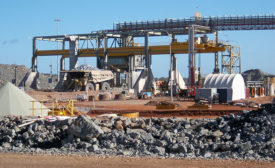Articles by Timothy Ludwig Ph.D.
Closing Time
Asking questions leads to improved worker performance
T.H.A.N.K.S. for the feedback
February 3, 2020
Closing Time
What happens in the boardroom affects the front line
Behaviors interlock all down the line
October 1, 2019
Closing Time
Workers help craft the best safety rules
Time to rebuild the “Rule Mill”
December 4, 2018
‘Safety culture’ is a messy concept
Too many interpretations lead to haphazard applications
October 4, 2018
Positive & negative workplace safety vibes
Does your presence make workers smile or feel squeamish?
April 20, 2018
Become a Leader in Safety Culture
Build your knowledge with ISHN, covering key safety, health and industrial hygiene news, products, and trends.
JOIN TODAYCopyright ©2025. All Rights Reserved BNP Media.
Design, CMS, Hosting & Web Development :: ePublishing










